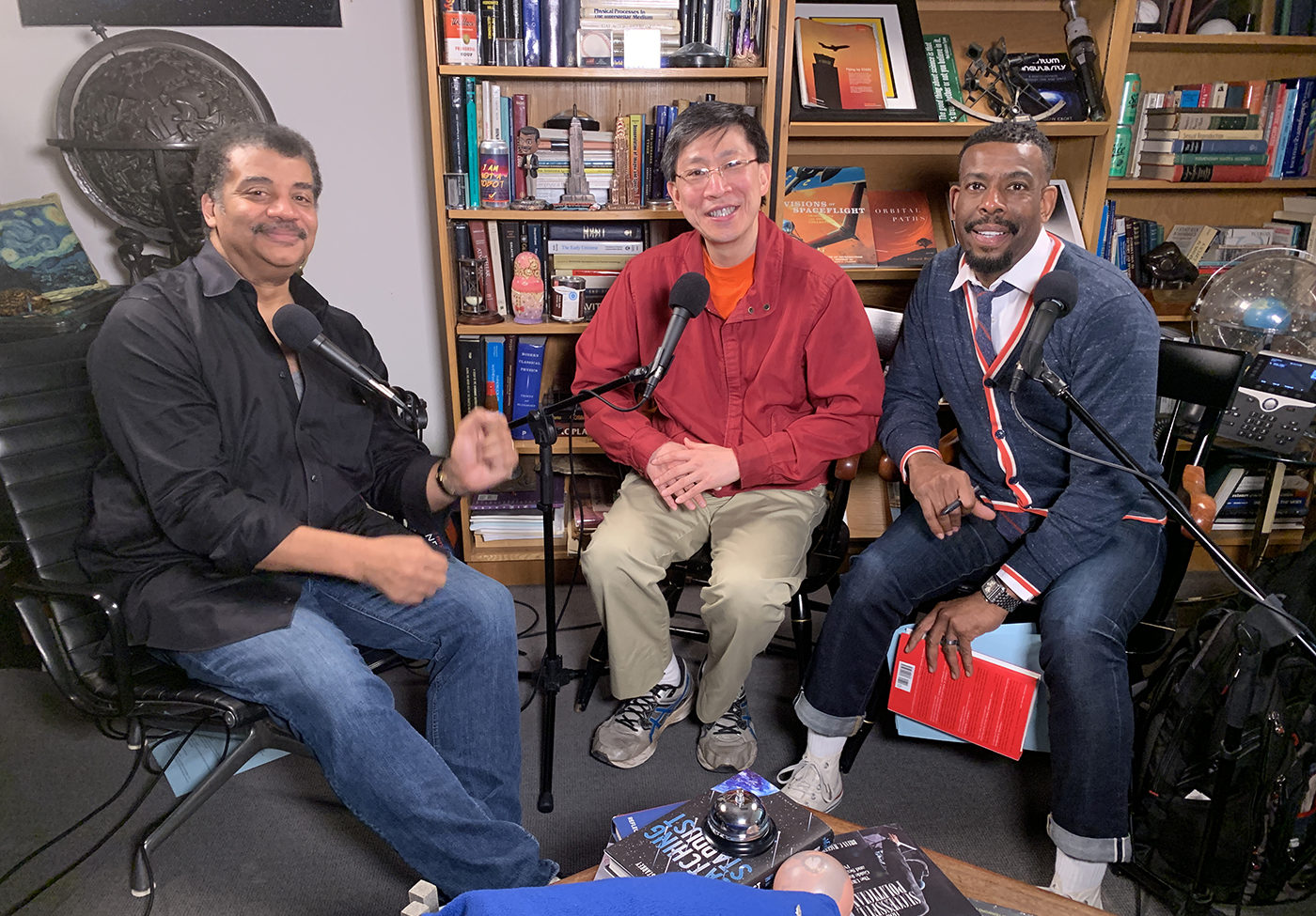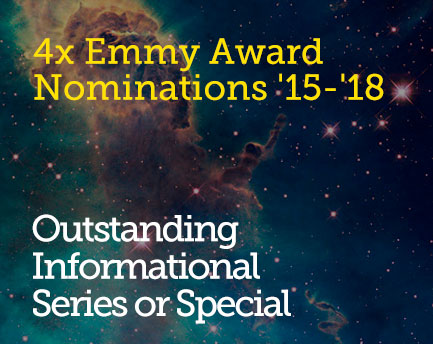August 8, 2019 9:00 pm
Friday, We Bring You Part II of the Science of Pop Fiction
We just had so many questions we had to come back again. On this week’s episode of StarTalk Radio, Neil deGrasse Tyson, comic co-host Chuck Nice, and astrophysicist Charles Liu team up once again to bring you the sequel of Cosmic Queries – Science in Pop Fiction. If you haven’t listened to last week’s episode, we covered everything from speed of light communication to Batman to the science of invisibility to the quantum realm and much more. You can check it out right here. This week is more of the same, but with new topics we all love.

Geeking out with Neil deGrasse Tyson, Charles Liu and Chuck Nice. Credit: StarTalk©.
To start, we have a deep debate about whether science fiction can influence real science and developing technologies, or vice versa. Charles tells us about his brief encounter with Ray Bradbury, the creator of Star Trek, and how Ray’s writings about Mars were heavily influenced by real science. We explore the history behind the invention of nuclear power and whether or not it had anything to do with the classic novel Twenty Thousand Leagues Under the Sea: A Tour of the Underwater World. Neil explains why the closest example of science fiction influencing real science is Kip Thorne’s work on the development of wormholes that spurred from Carl Sagan’s Contact.
Then, we head into the wild world of Wakanda once again. Is there anything in real life, like the Black Panther suit, that can absorb energy from bullets, punches, and more and redistribute that same energy? You’ll learn why Charles, the comic book geek that he is, appreciated the Marvel Cinematic Universe’s use of vibranium in Black Panther. We also discuss photon energy and how it interacts with the human body.
You’ll find out what kind of star system would create the different lengths in seasons as seen in Game of Thrones. We ponder if Ant-Man could kill Thanos just by exploding him from the inside out. Explore how pop fiction can make science more comprehensive to audiences. We debate this question – is time travel as a plot device just lazy writing? We also debate what the best use of time travel is in science fiction.
Lastly, get the scoop on tachyons: what they do, how they work, and why they’re hypothetical. And, Charles reveals what TV show he would love to work on as a science consultant. All that, plus, you’ll hear which “Hollywood” trope Charles is tired of seeing on the big screen.
Please join us tomorrow night for Cosmic Queries – Science in Pop Fiction, the Sequel at 7pm ET right here on our website, as well as on Apple Podcasts, Google Play Music, SoundCloud, Spotify, Stitcher, and TuneIn. If you’re a StarTalk+ Patron or an All-Access subscriber, you can watch or listen to this episode ad-free at 7pm, too.
That’s it for now. Keep Looking Up!
-Ian Mullen
Get the most out of StarTalk!
Ad-Free Audio Downloads
Ad-Free Video Episodes
Stickers & Mugs
Live Streams with Neil
Priority Cosmic Queries
Early-Access Videos
Learn the Meaning of Life
...and much more

 Become a Patron
Become a Patron

